Knives, salt and other unusual forms of ancient currency
Categories: Economy | History | World
By Pictolic https://pictolic.com/article/knives-salt-and-other-unusual-forms-of-ancient-currency.htmlMoney. Just with this one word, people have a lot of feelings, thoughts and emotions. But would you accept a bar of salt or a huge stone instead of the usual salary?
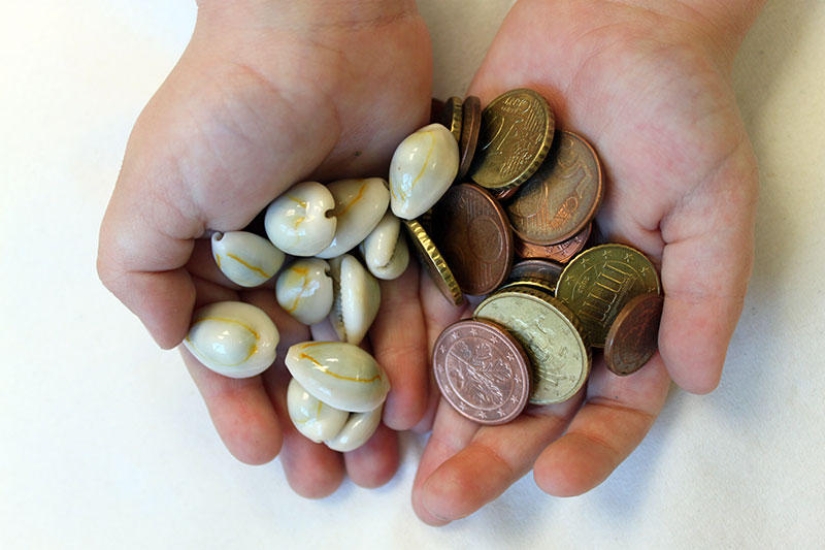
People have long attributed monetary value to various objects and used amazing objects of various shapes, sizes and formats as money. And although most of this so-called currency is already impractical and impractical today, it serves as an important reminder of what people valued in the past and why.
In this article, we will look at ten incredible examples that are completely different from what we today call the familiar word "money".
Probably the strangest and most terrible currency of antiquity is dolphin teeth, which have been used in the Solomon Islands for several centuries. In 2008, the dollar on the island depreciated. In response, local residents began to accumulate money, which in turn led to a shortage of coins and further aggravated the situation. As a result, in some parts of the islands, people decided to return to the traditional currency - dolphin teeth.

According to the British edition of the Royal Society Open Science, in the period from 2004 to 2013, the cost of one dolphin tooth increased from 14 to 68 cents. For this reason, the population of marine mammals has declined markedly in recent years. Local dolphin hunter Henry Sukufatu stated:
For a long time, fur skins have played an important role in exchange and trade. In medieval times, squirrel fur was considered the most valuable of all, which is why it became the generally accepted form of currency in Finland and Russia. Some believe that killing squirrels for money by coincidence saved a significant part of the Russian population from bubonic plague (squirrels are carriers of the plague bacillus). At that time, Russia used not only squirrel skins, but also the muzzles and claws of these animals.

Presumably, in Finland, squirrel skins are still accepted as a means of payment, and also endow them with a use and exchange value. Therefore, if you suddenly hear someone in Finland pronounce the words "squirrel skins", know that it may be about money.
Salt has been considered a valuable commodity for thousands of years. It played a significant role in the development of early civilizations. It is mentioned in several important religious traditions and texts. In 2200 BC, the Chinese Emperor Yu the Great paid the first recorded tax payment in history with salt.
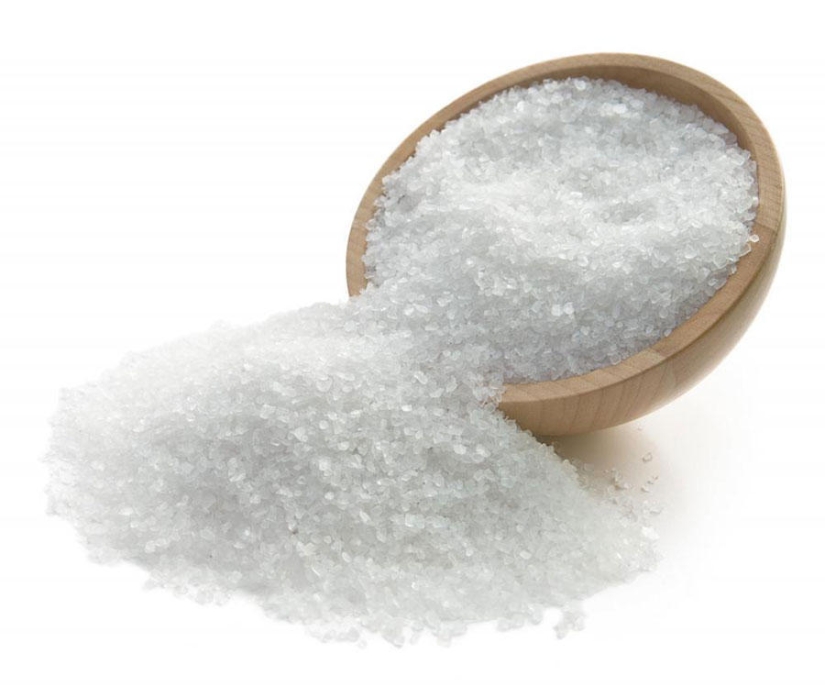
The introduction of the salt tax was one of the reasons for the French Revolution. The product itself also played an important role in the American Civil War. Moreover, in ancient Rome, soldiers were often paid for their service with salt. And even today, some nomadic peoples of Ethiopia use the "white death" as a currency.
In ancient Greece, the shortage of black pepper caused its unprecedented price. According to historical information, in the V century, the first king of the Visigoths Alaric and the leader of the Huns Attila captured Rome and demanded a huge amount of black pepper from the inhabitants of the city as a ransom.
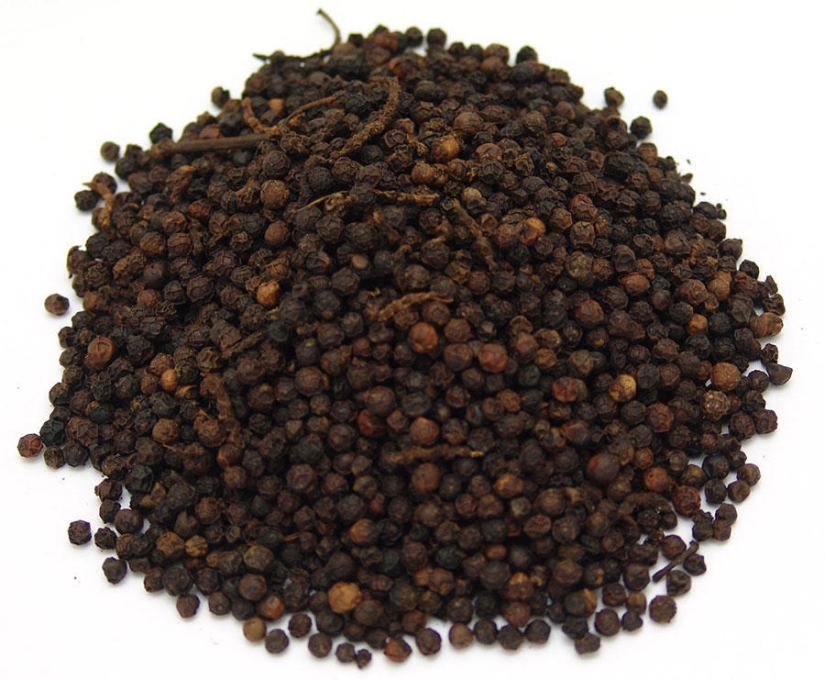
In the Middle Ages, black pepper became a common form of currency. In the XV century, the demand for spices in Europe increased so much that this fact played a huge role in the development of sea routes with the Far East. Because of the high cost, the spice was called "black gold" and until the XIX century it was considered a luxury that only very rich people could afford. Today, black pepper is the most widely used spice in the world.
The first currency of America was beads — in particular, wampum. These are traditional handmade beads made from white and purple shells of gastropods and bivalves. When European settlers landed on the shores of North America in the XVI-early XVII centuries, they noticed that the indigenous people treated wampums in a special way, considering them sacred and valuable objects. The colonists also found that Native Americans were more willing to share much-needed supplies if they were offered wampums in exchange. So, shell necklaces became the official currency, although the representatives of the indigenous population of North America did not consider them as money at all.
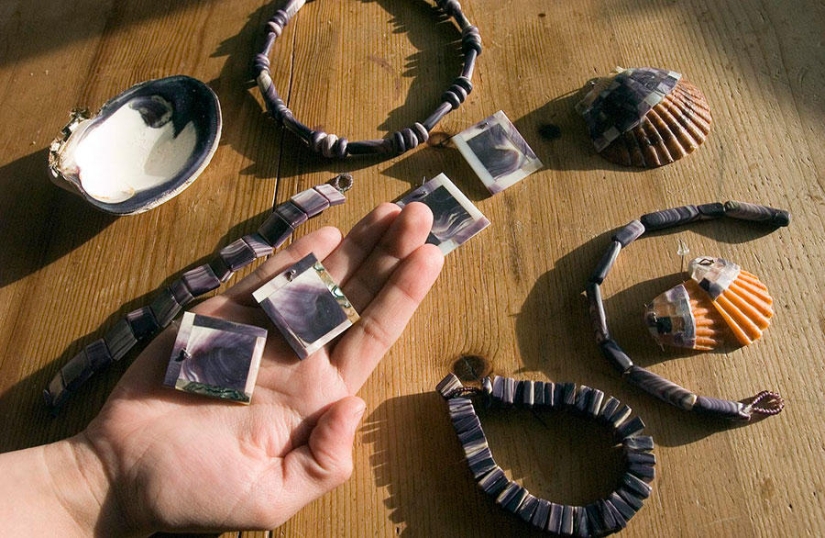
After some time, mass production of wampums began in European factories. However, eventually, in 1663, shell beads were withdrawn from circulation in the colonies of New England - although in In New York, they remained the official means of payment until the beginning of the XVIII century; and some European factories continued to produce wampum until the early 1900s.
Tea bricks have become another amazing form of ancient currency. To produce this valuable product, the stems and leaves of the tea bush were mixed with various herbs, and sometimes with dry wood chips. Bricks were formed from the resulting mixture, the binding agent was bull blood or droppings.
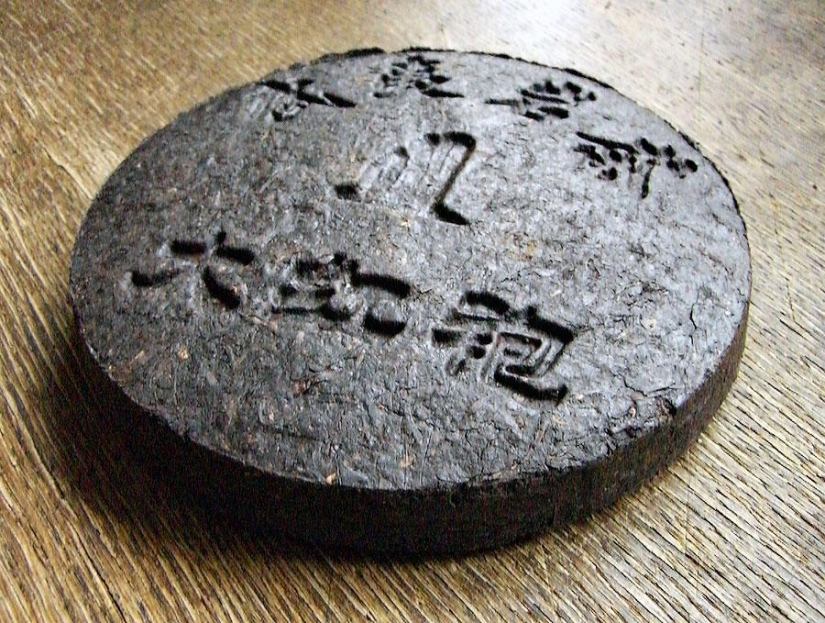
Traditionally, Chinese hieroglyphs were depicted on tea bricks or unique patterns and drawings were applied. In the XIX century, they began to be used as currency in China, Russia, Tibet, Siberia and Mongolia. For 12 of these bricks it was possible to buy one ram, for 20 — to buy a horse. In Siberia during the Second World War, tea bricks were eaten and also used as medicine.
For some, the size may not matter, but not for the inhabitants of the island of Yap (Micronesia). There is every reason to believe that they started creating their Rai stones back in 500 AD. To make such an unusual form of currency, they needed limestone, which could only be found on the neighboring island of Palau. There they carved huge round disks out of stone with a hole in the center and then transported them back to Yap.
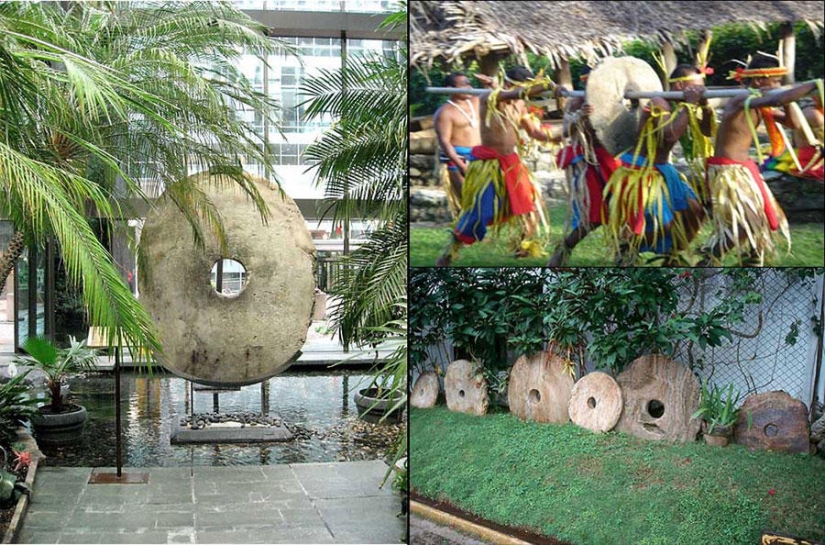
The diameter of some stones reached more than 3.5 meters, and the weight was over 4 tons. The cost of the stones was determined by the process of their manufacture - extremely dangerous, and sometimes even fatal. After the Rai stones were used as a means of payment, the place of their position often remained unchanged. In fact, there was no need for a physical exchange, since everyone already knew who the Rai belonged to.
The value of the stones decreased with the arrival of Europeans, whose technologies greatly facilitated the process of their manufacture. Today, Rai stones participate in various rituals and ceremonies, and are also a national symbol of the Federated States of Micronesia.
Cowry shells (porcelain snail shells) are one of the earliest forms of ancient currency. They are small in size, light and durable, besides they are very difficult to fake (although some people still managed to make fake cowry shells from materials such as horns, bones, lead and even silver and gold). Cowries were also used to make stunning jewelry and ornaments.
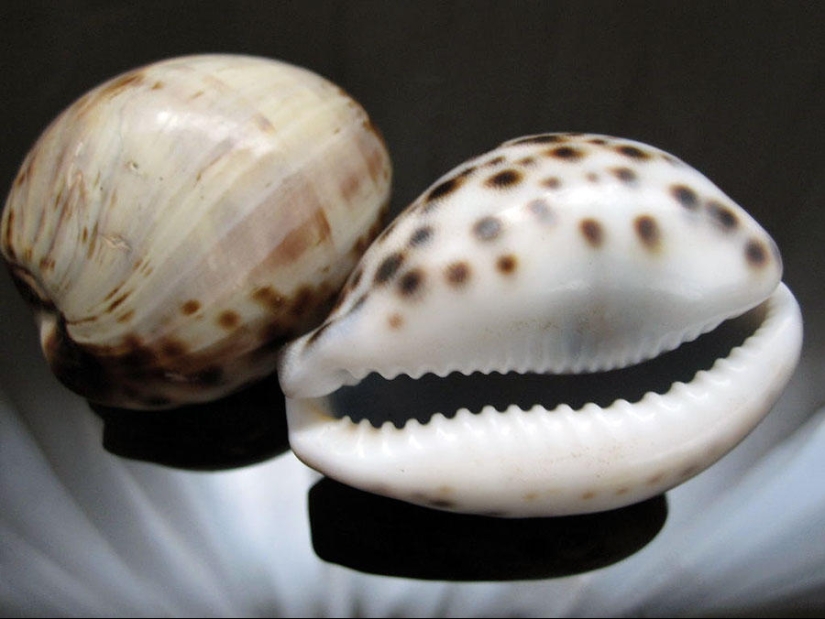
Cowry shells were first used as a medium of exchange in China at the beginning of the XVI century BC. Later, this type of currency spread in the largest trading areas of Africa, Arabia, in some parts of Europe and Asia. Cowries were of insignificant value, and a large number of them were required for trading operations, so they were strung on laces or put in bags. In India in the XIX century, several thousand cowries were equal to one rupee.
This truly wonderful type of ancient currency originated in the northern part of the Black Sea. At the beginning of the VII century, arrowheads began to be used as money in the territory known as the Great Scythia, which covered the lands of modern Ukraine, Central Asia, Eastern Europe, the North Caucasus and part of Russia.
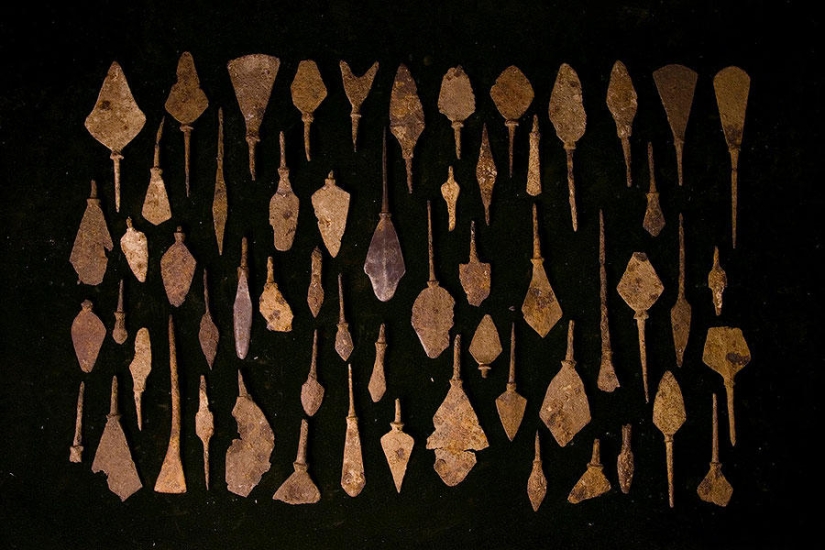
Bronze arrowheads appeared long before the usual ancient coins and were highly valued for their durability and the possibility of use as weapons.
Like arrowheads, ancient Chinese knives were both weapons and currency. Money-knives are an indicator of what people valued at that time. This extraordinary currency first appeared in China around 600 BC, during the reign of the Zhou Dynasty. Historians believe that the knife-shaped coins were modeled after the scraper knives used by nomadic hunters in the northern and eastern parts of the country.
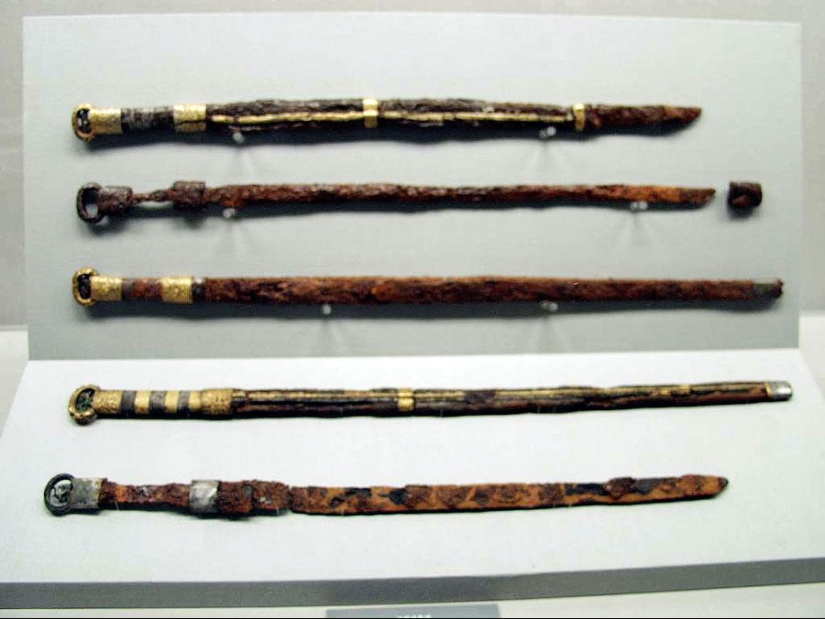
Numbers or individual words- for example, "sheep" or "fish"—were often scratched on knife money, which most likely determined the value of each individual coin. All the coins also had an inscription indicating that they were the official currency. Knives were used as money for several hundred years until the first emperor of China, Qin Shi Huang, abolished this currency and declared that from now on round coins with a square hole in the middle would be the only legal tender.
Recent articles

Many have heard about this disease, like rabies, can even say that it is a result of the animal bite, and the victim will have to ...

The upcoming trip is always so joyful and exciting, and it seems that nothing can spoil the upcoming vacation! But drawing up a ...

The scooter, once considered nothing more than a child's toy, has become a full-fledged personal transport these days. Our streets ...